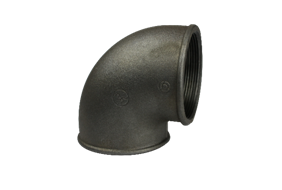Black pipe is a type of steel pipe that is commonly used for potable water lines and waste drainage systems. It refers to plain carbon steel pipe that has not been galvanized for corrosion protection. Let’s take a closer look at black pipe for water line.

What is Black Pipe?
Black pipe, also called bare steel pipe, is made from plain carbon steel that has not undergone any coating process. It has a dark gray color that gives it the name “black pipe”.
Black pipe is typically produced from hot rolled steel coils that are cold formed into pipe. It has a seam or joint line where the coil is joined. Black pipe is available in schedules 40 and 80, based on wall thickness.
Black steel pipe itself provides little resistance to corrosion. So for uses like water lines, it needs to be threaded and installed with specialized fittings and joiners.
Properties Of Black Pipe For Water Lines
Some properties of black pipe that make it suitable for water line applications are:
- Low cost – Black pipe is available at a lower cost than galvanized steel pipe.
- Strength – Black pipe has high tensile and compressive strength for withstanding water pressures.
- Thin walls – The thin walls of schedule 40 and 80 black pipe reduce weight and material cost.
- Easy joining – Black pipe can be joined using threaded fittings, unions and flanges.
- Resistance to hot water – Black pipe can withstand hot water temperatures up to around 200°F.
However, since black pipe offers little corrosion resistance on its own, it needs to be installed properly along with corrosion resistant fittings and joiners.
How To Install Black Pipe For Water Line
To install black pipe for water lines:
- Select the appropriate pipe thickness based on water pressure requirements. Schedule 40 pipe is suitable for most residential water lines.
- Cut the pipe to required lengths using a pipe cutter. Deburr the cut ends to remove sharp edges.
- Apply pipe thread sealant or tape to the pipe ends before screwing on threaded fittings. This helps create a seal.
- Use unions, flanges or flexible couplings at strategic points for easier disconnection and maintenance access.
- Use brass or plastic threaded fittings instead of galvanized steel, which can corrode inside black pipe.
- Install dielectric unions where steel pipe connects to copper lines to prevent corrosion due to galvanic action.
- For long term corrosion resistance, consider coating the interior of black pipe lines after installation using materials like epoxy. This forms a barrier against water and air.
- Flush the pipe thoroughly before use to remove any fabrication debris and impurities.
By taking these precautions during installation and maintenance, black pipe can provide years of service for residential and commercial water lines. However, for harsher environments or industrial applications, galvanized steel pipe or plastic pipes may be a better choice due to their superior corrosion resistance.
Main Difference Between Black Steel Pipe And Galvanized Pipes
- Corrosion resistance – Galvanized pipe has a zinc coating that provides corrosion protection, while black pipe has no coating and offers little resistance to corrosion.
- Material cost – Black pipe is usually cheaper than galvanized pipe since it does not require a zinc coating process.
- Installation – Black pipe requires the use of specialized fittings, sealants and coatings to protect against corrosion when used for water lines. Galvanized pipe can be installed directly.
- Longevity – Properly installed galvanized pipe typically lasts much longer than black pipe for outdoor or underground uses due to its coating.
- Appearance – Galvanized pipe has a silver-gray color due to the zinc coating, while black pipe has a dark gray color.
- Compatibility – Galvanized pipe is more compatible with other piping materials like copper and PVC due to having a protective coating. Black pipe requires isolation.
